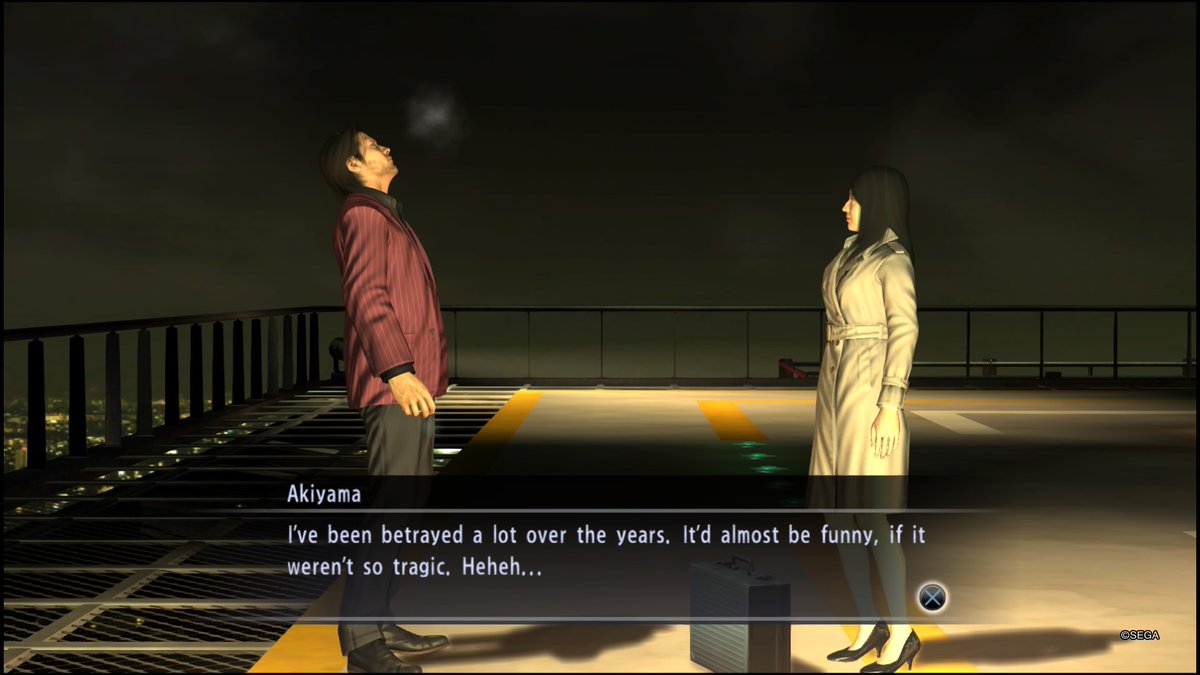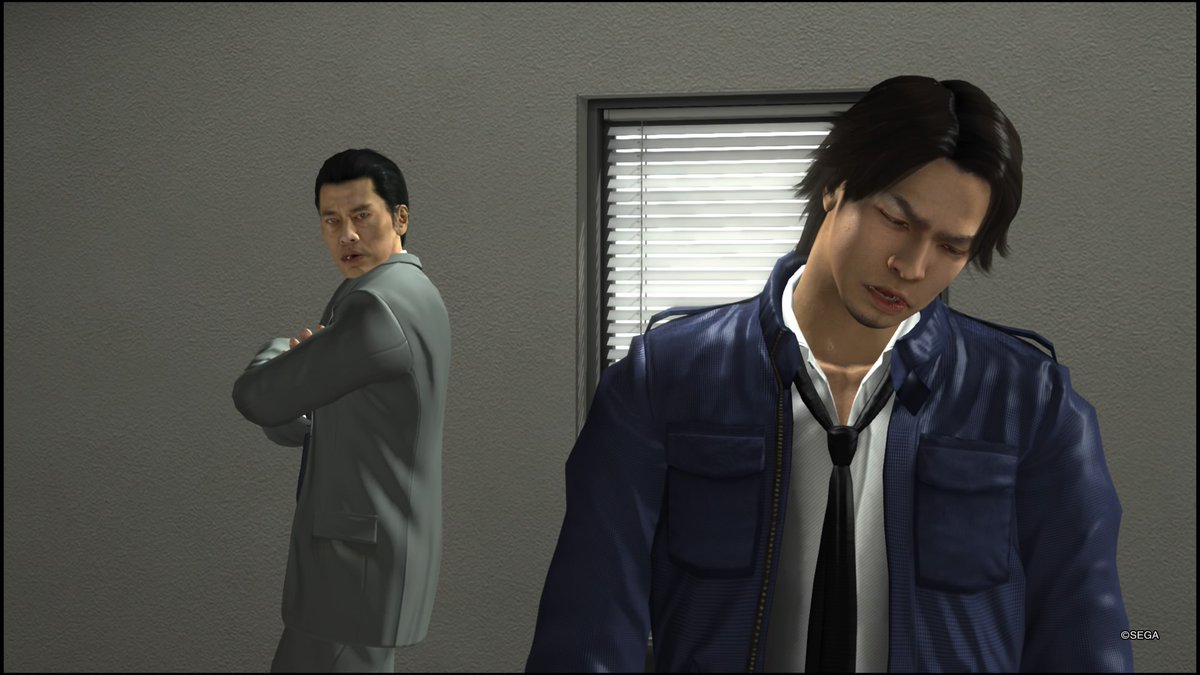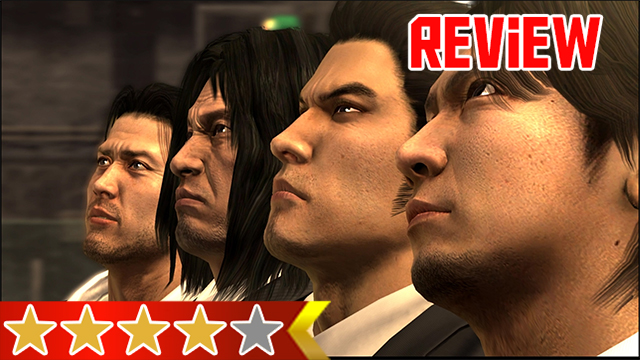Sega kicked off the Yakuza Remastered Collection in August by releasing a completely relocalized version of Yakuza 3, and now YAKUZA 4 joins it on the PlayStation 4 for the first time. The company didn’t need to put in quite as much work this time around as the 2011 PlayStation 3 exclusive already had a great localization and wasn’t filled with errors and cut content like its predecessor. However, it is a rather unique entry as it is the only game in the series that Yakuza 3 director Daisuke Sato didn’t work on and was the first Yakuza title to feature multiple playable characters rather than just Kazuma Kiryu. Regardless, it is still one of the best Yakuza games to date, even after all these years.
In fact, with one notable scene as an exception Kiryu is barely seen or mentioned in the first half of Yakuza 3. Instead it focuses on the three new protagonists, who are all completely fresh to the series. There’s Shun Akiyama, a former homeless man turned venture capitalist that uses his wealth to help those that are willing to do whatever is possible for it, a legendary Yakuza hitman named Taiga Saejima that is sworn brothers with Goro Majima, and a seemingly crooked cop named Masayoshi Tanimura that struggles to be accepted due to being mixed race in Japan.
ALSO: Yakuza 3 Remastered Review | Revisiting Okinawa in style
It’s quite the array of characters, and they all bring a lot to the table in terms of narrative and gameplay. Every character has their own fighting style as Akiyama uses flashy kicks, Saejima has powerful attacks that can be charged up, and Tanimura prefers to parry attacks in order to catch his enemies off-balance. While their main stories all intertwine in Yakuza 4‘s complex story, their substories are quite different from one another. Most of Tanimura’s revolve around helping out undocumented Asian immigrants, while Taejima has to avoid the cops and befriends a number of homeless men as he sneaks around the sewers, and Akiyama manages a hostess club while also testing the wills of people that ask him for an interest-free loan. The variety is great, and the game (as the series always has) manages to do a great job of portraying different groups (from sex workers to the homeless) that often are viewed with prejudice with care.
Yakuza 4 Remastered Review | Four adventures for the price of one

Unlike most of the series, which usually has at least two areas to explore, Yakuza 4 takes place entirely within Kamurocho. To help flesh out the city, Ryu ga Gotoku Studio added in complex underground and rooftop sections that give players another place to explore. For the most part, these wind up being more of an annoyance than a rewarding way to see Kamurocho, and only Taejima (who is set to be executed and is on the run) has to use them to get around much. It says a lot that the Yakuza series, which always aims to get grander in its complexity, has taken out these areas in more recent titles.
Beyond that, this is still the same Kamurocho that players know and love. The same can be said for the gameplay as well as there’s no drastic changes on display here. It’s still a lot of punching dudes until they fall on the ground and then using the character’s heat gauge in order to perform hilariously violent attacks on thugs. There’s also an incredible amount of content here, including a new Fighter Maker mini-game that has the player training disciples in a dojo to compete in Purgatory’s underground fighting tournaments.
The main story winds up being quite satisfying as it’s the first time that Yakuza has this many moving pieces all in play at once. All four of the characters’ individual journeys wind up intersecting at the end and it helps create an epic finale. Unfortunately, the final boss battle is one of the worst fights in the entire series, so it goes out on a whimper rather than a bang from a gameplay standpoint. However, the narrative is a resounding success and that’s ultimately what matters the most as Yakuza has never had the greatest combat.
Yakuza 4 Remastered Review | Wait … why does Tanimura look so different?

For the most part, the remastered version of Yakuza 4 doesn’t offer up much new. It does run at a smooth 60 frames per second and at a crisp 1080p resolution, though, which is always nice to see. Annoyingly, no real quality of life updates were made as players still have to manually save at payphones and the lengthy cutscenes can’t be paused through the game itself (although a workaround is hitting the PlayStation button and going to the dashboard). It’s a pretty bare-bones remaster, but Yakuza 4 could be even better if a few areas had been touched up.
It’s also not a wild request when one aspect of Yakuza 4 was drastically changed from the original release. The character of Masayoshi Tanimura (pictured above) looks completely different from the PlayStation 3 version and a different voice actor delivers his lines. This is due to Hiroki Narimiya, Tanimura’s original actor (whose likeness he shared), retiring from the entertainment industry in 2016 after allegations emerged about him using cocaine. In his place is Japanese actor Toshiki Masuda, who does a great job in making the character his own. It’s a situation that is very similar to what happened with Judgment recently, and demonstrates how differently Western and Eastern culture view drug use.
Yakuza 4 remains a very important title in the series even if it puts Kiryu in the background more than any other title. All four characters have interesting backgrounds that lead to their sections of the campaign feeling quite different from one another. It’s not the best title in the series from a gameplay perspective, nor is it the most thematically consistent title due to its varied protagonists, but it’s still an interesting crime thriller that manages to impress. While its immediate sequel, Yakuza 5, did many of these things in a more impressive fashion, Yakuza 4 laid the important groundwork to make it all possible.
-
All of the characters are fun to play.
-
Twisting narrative that finishes without loose ends.
-
Interesting and unique substories for everyone.
-
Can't pause any cutscenes.
-
Rooftops and sewers are annoying to navigate.
-
Final boss fight sucks.







